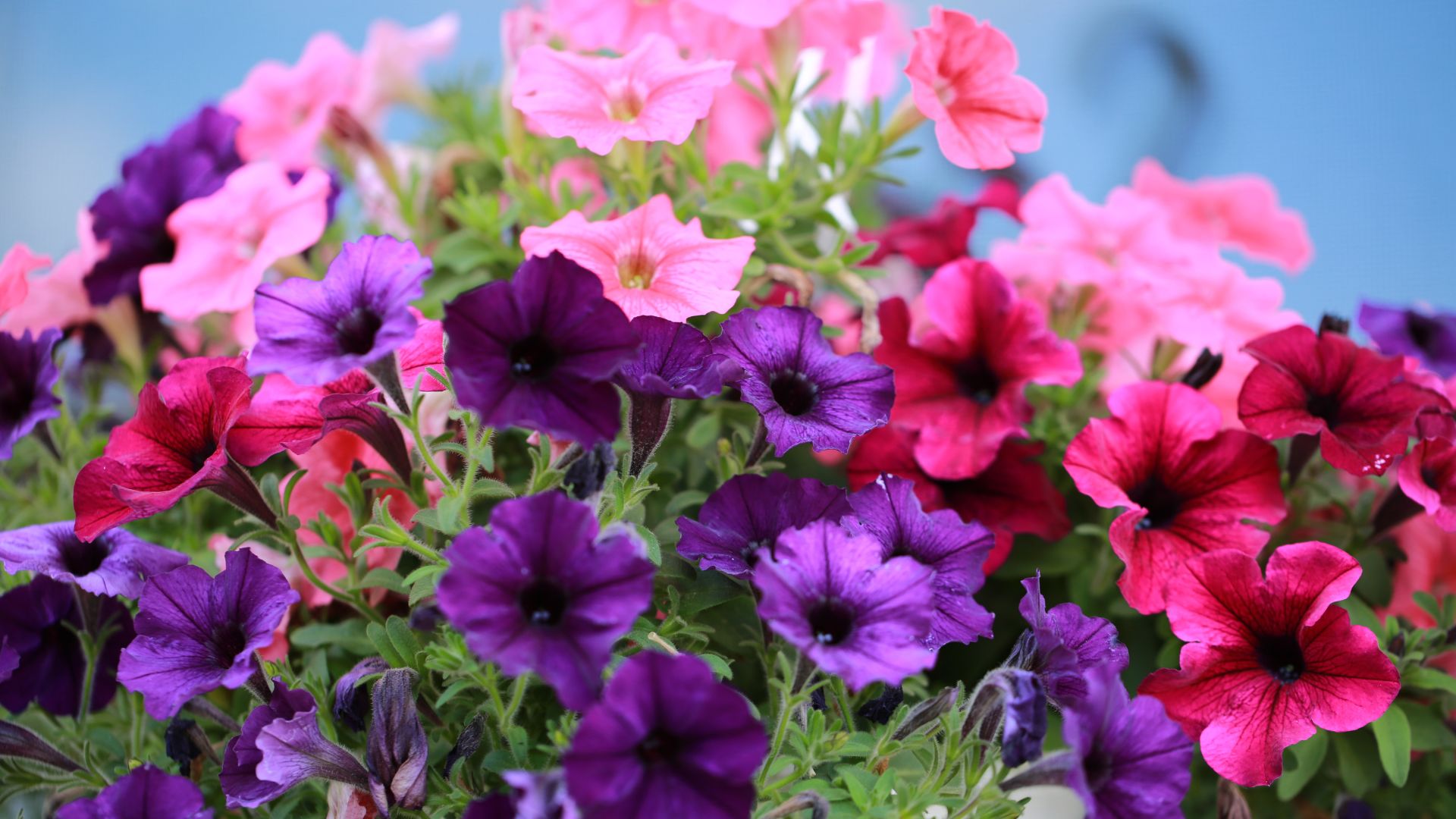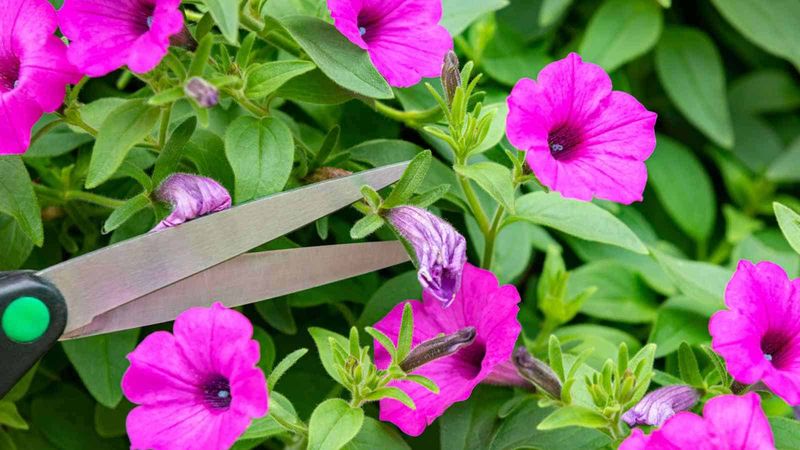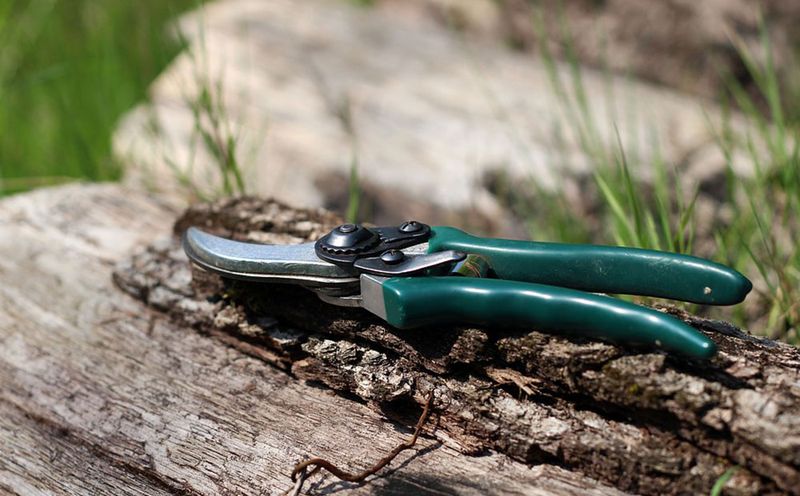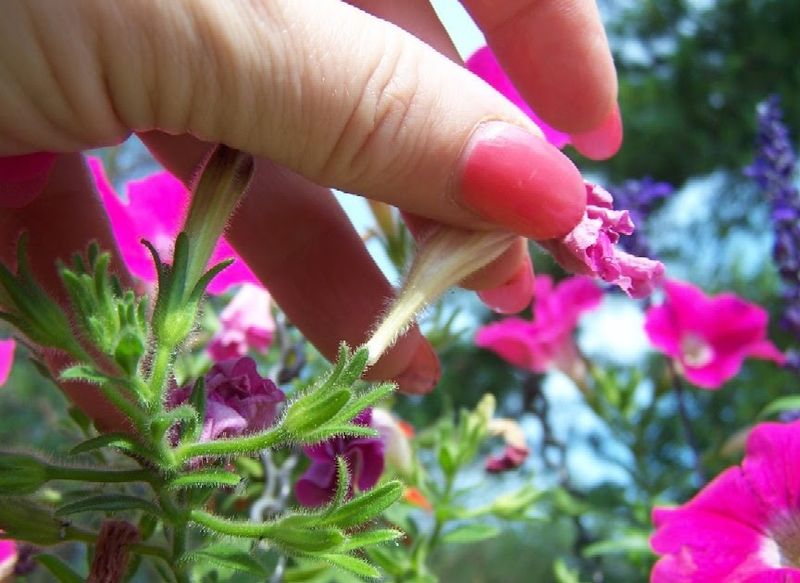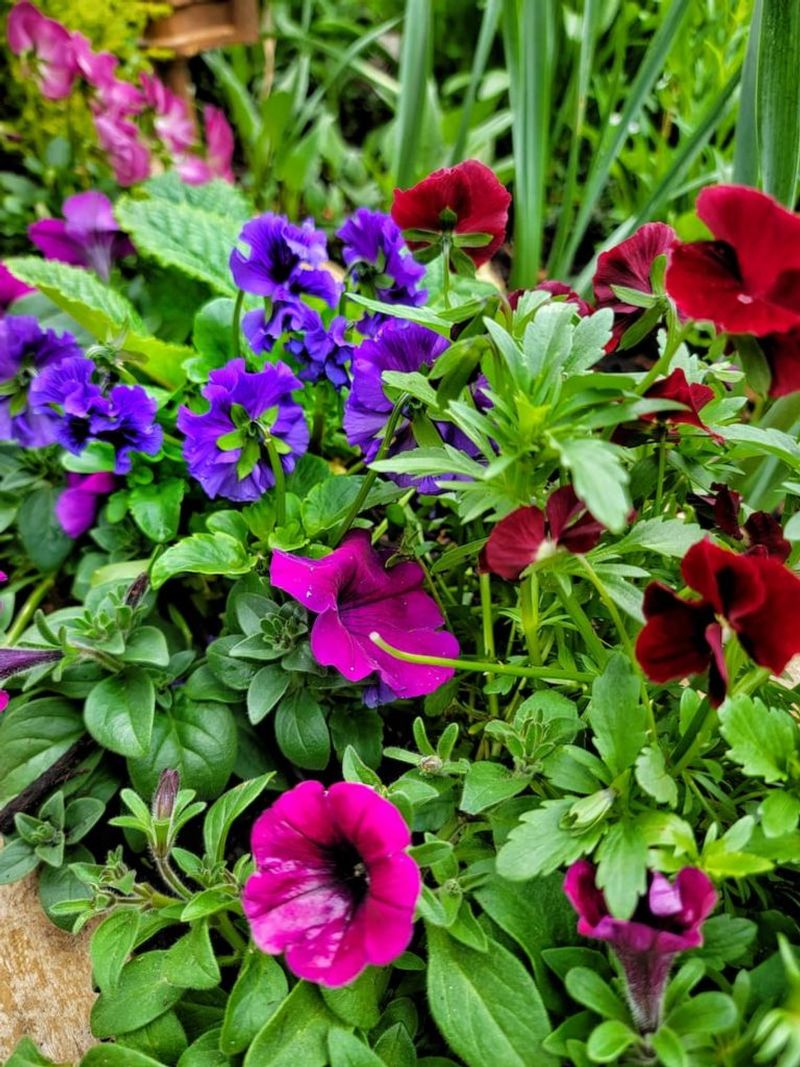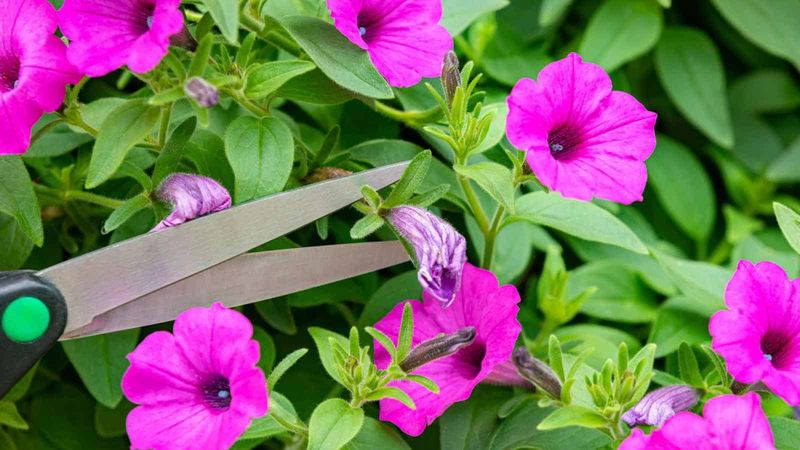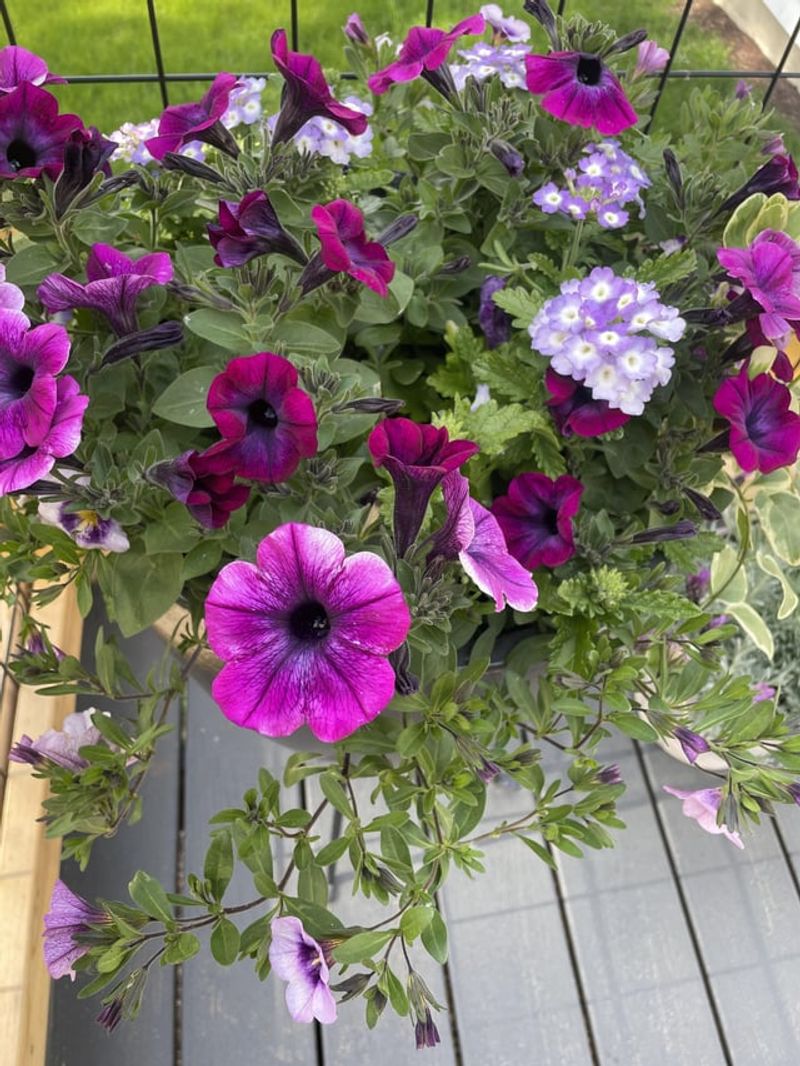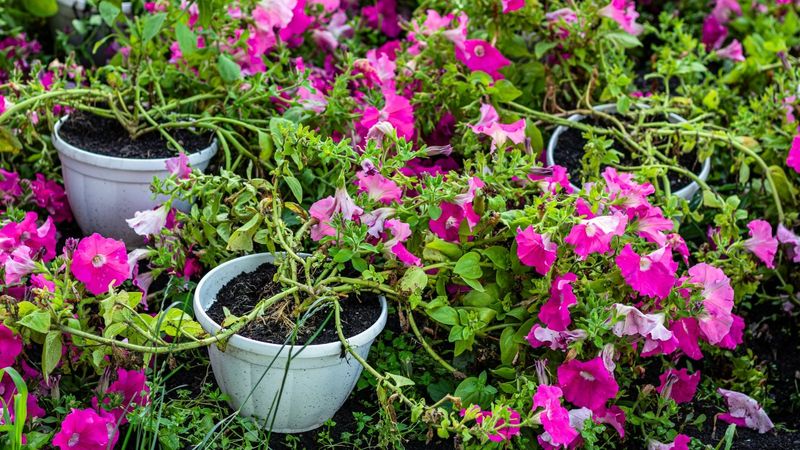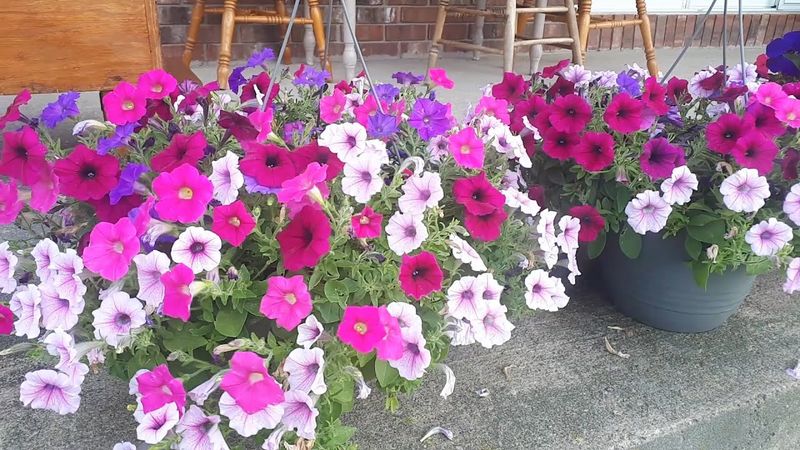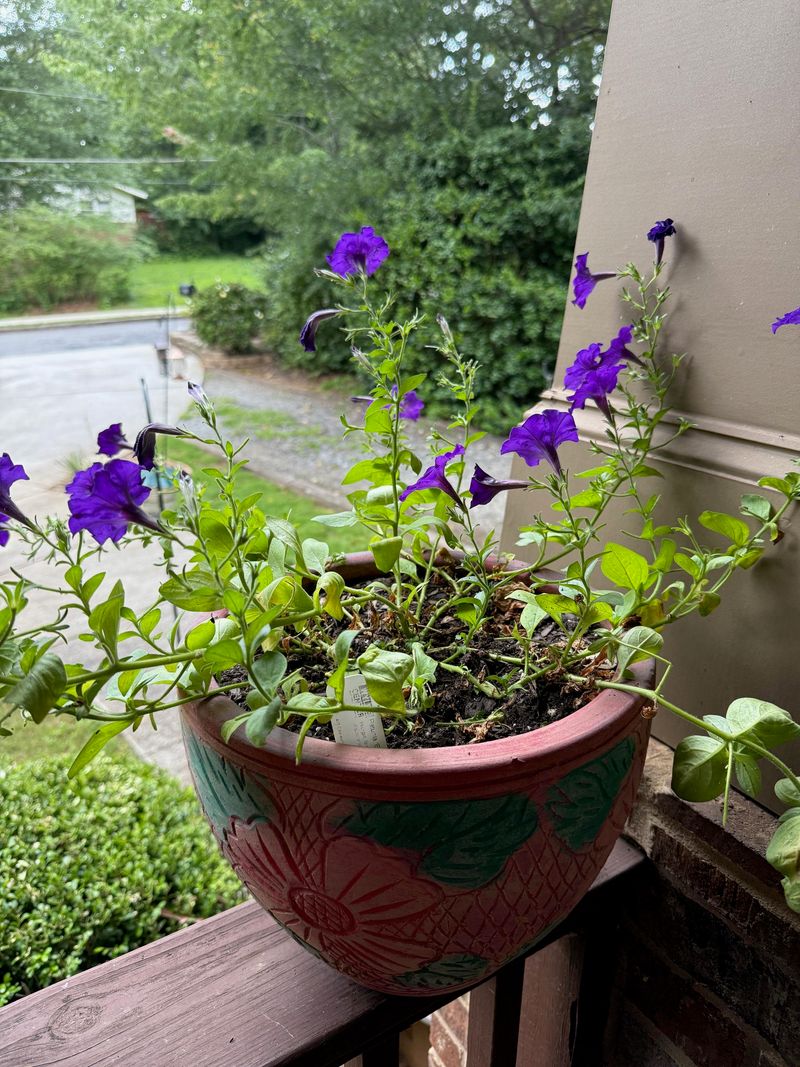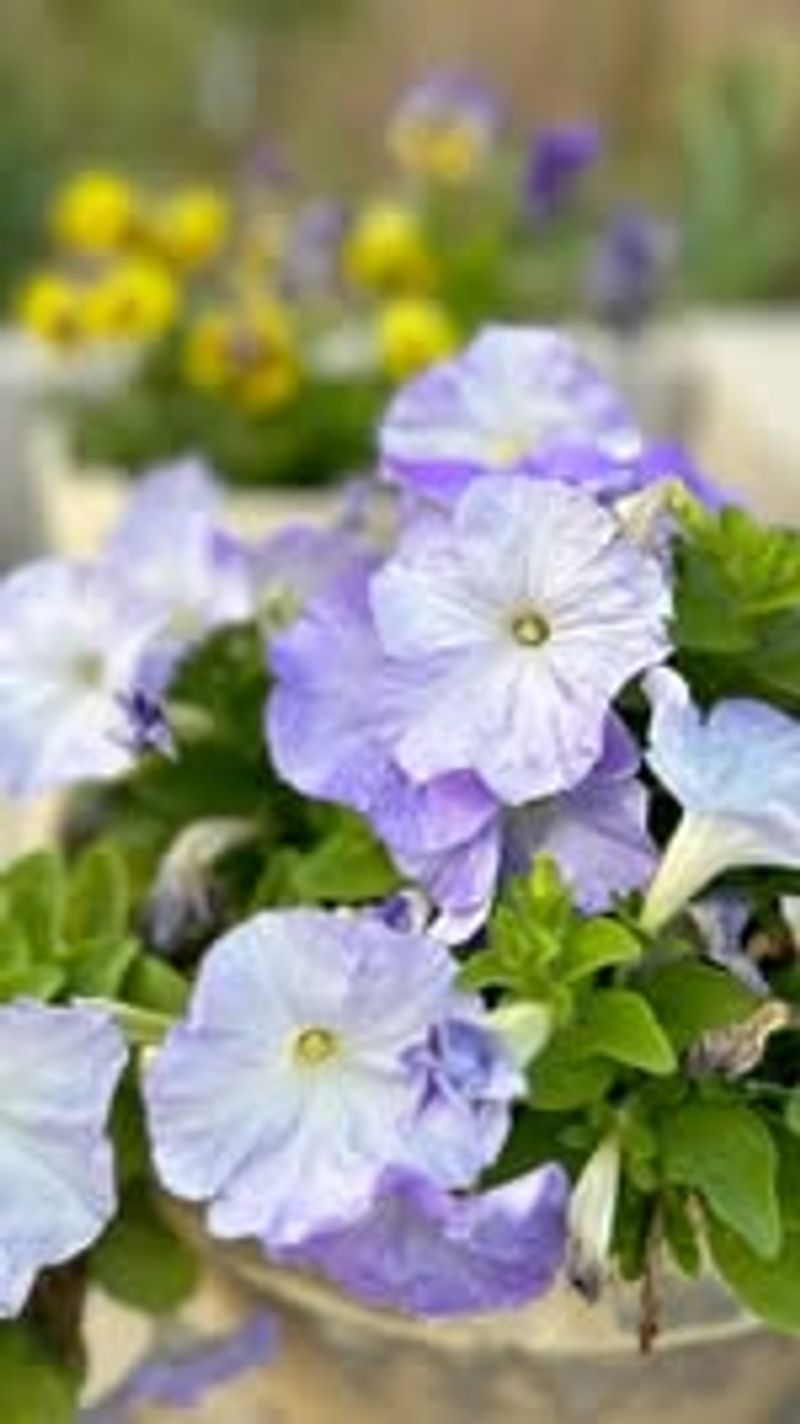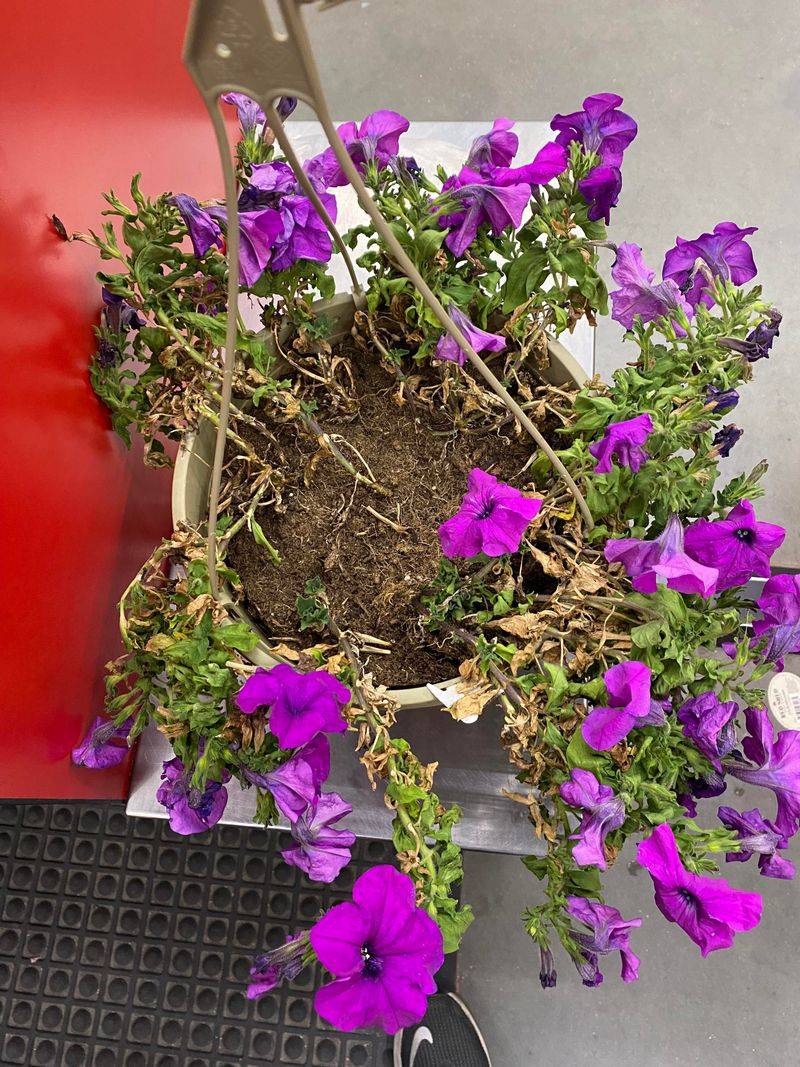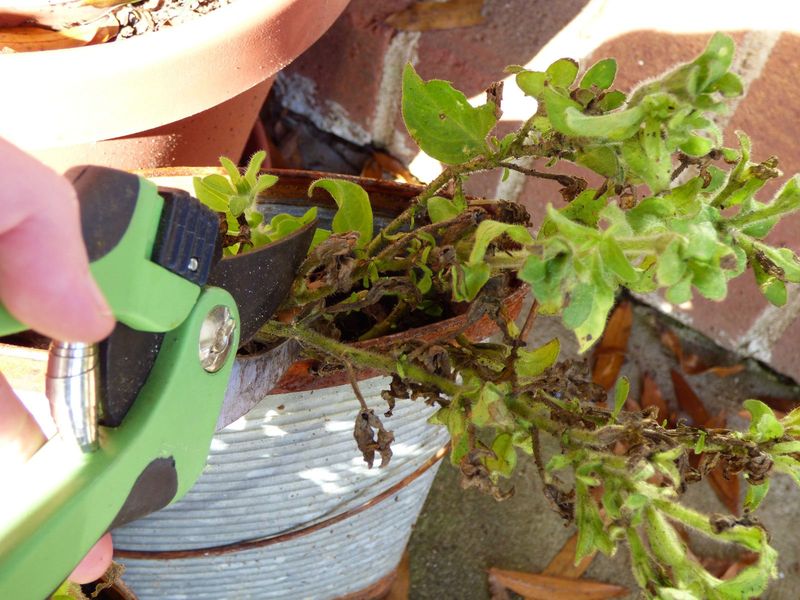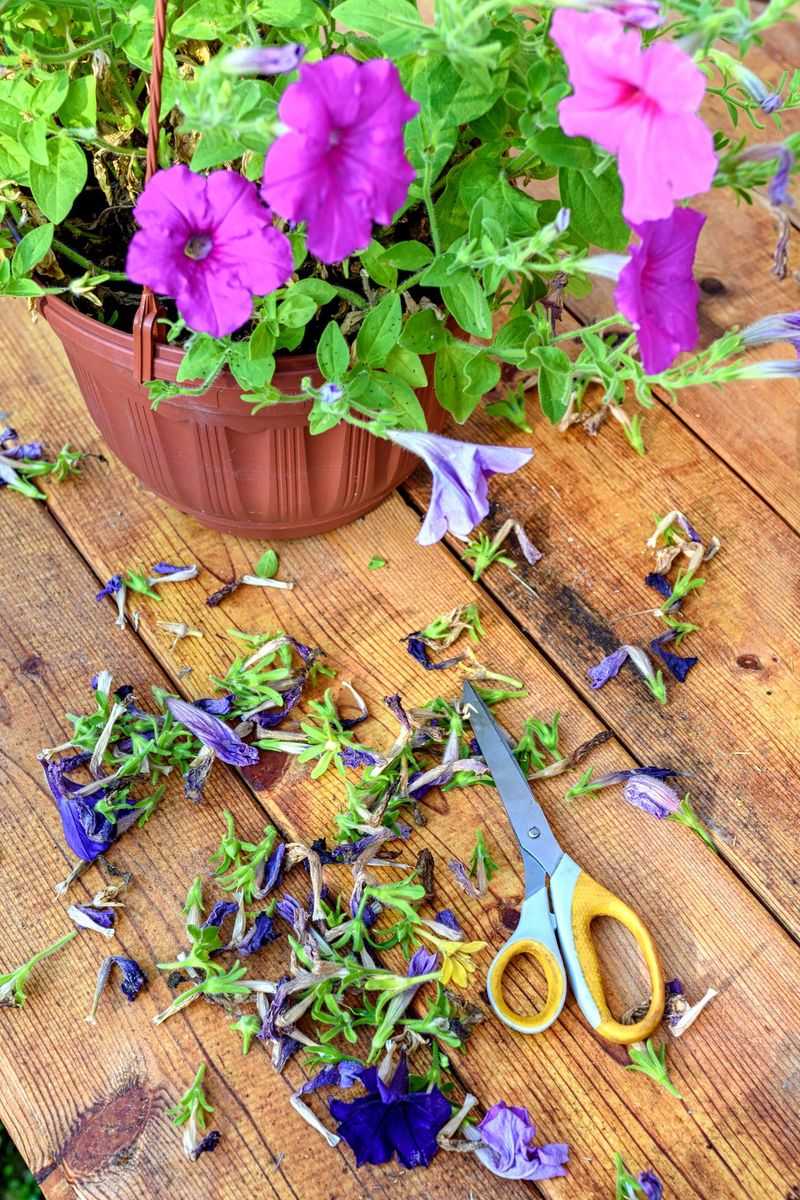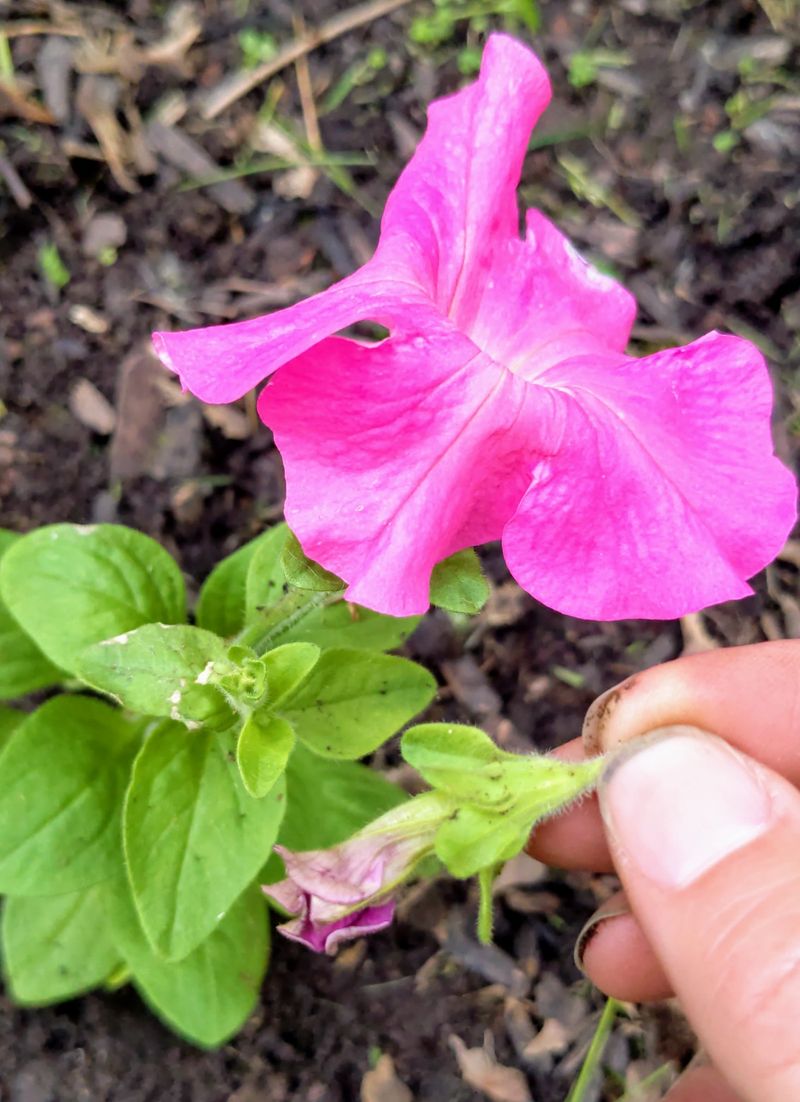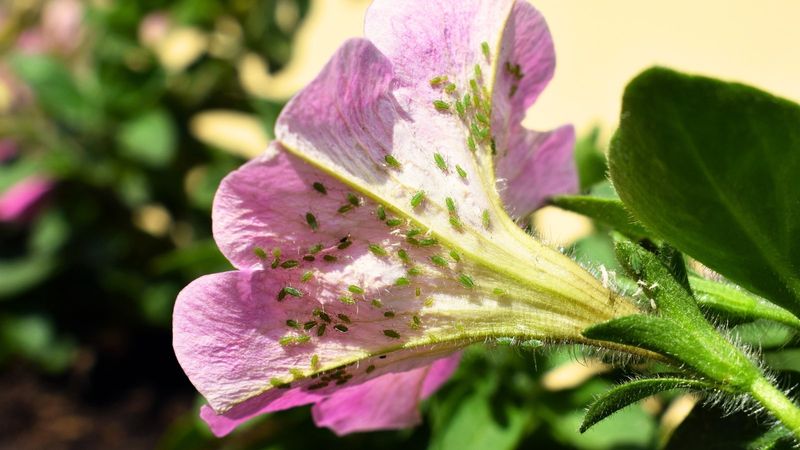Petunias are the showstoppers of any garden, bursting with color and charm all season long. But to keep them blooming beautifully, they need a little routine care. The trick? Deadheading—snipping off the faded flowers before they turn to seed.
Removing spent blooms isn’t just about looks—it gives your petunias a boost. Instead of wasting energy on seeds, the plant pours it into making fresh, vibrant flowers. Think of it as a gentle nudge that says, “Keep the show going!”
With just a few minutes of deadheading each week, your petunias will reward you with nonstop color. It’s an easy habit that turns ordinary care into extraordinary garden results.
1. Know When To Deadhead
Timing matters when removing spent petunia blooms. Look for flowers that have wilted, turned brown, or become translucent – these are ready for removal.
Morning deadheading works best because plants are hydrated and less stressed. I’ve found that checking my petunias twice weekly during peak growing season keeps them looking fresh and encourages continuous blooming.
Don’t wait until flowers have fully dried and formed seed pods, as by then, the plant has already wasted energy on seed production.
2. Use The Right Tools
Clean, sharp scissors or pruners make deadheading petunias much easier than using your fingers. Small embroidery scissors work perfectly for delicate stems without damaging nearby healthy growth.
Always sanitize your tools before starting. A quick wipe with rubbing alcohol prevents spreading plant diseases between flowers. From my experience, keeping a dedicated pair of small pruners just for deadheading saves time and reduces contamination risks.
For container petunias, nail scissors offer precise control when working in tight spaces.
3. Master The Pinching Technique
Proper pinching technique makes all the difference for healthy regrowth. Grasp the stem just below the faded flower between your thumb and forefinger, then pinch or snip cleanly above the nearest set of leaves.
The clean cut encourages the plant to branch at that point, creating more flowering stems. After years of gardening, I’ve noticed plants pinched correctly produce nearly twice as many blooms as those deadheaded haphazardly.
Avoid tearing or crushing stems when pinching by hand – this can invite disease and slow recovery.
4. Follow The Stem Down
Don’t just remove the flower head – follow the stem down to find the right cutting point. Look for the first set of healthy leaves or a Y-junction where new growth appears.
Cutting at these growth points stimulates the plant to produce new branches. My garden journal shows that petunias trimmed this way develop a bushier habit with more flowering potential than those where only the bloom was removed.
This technique works especially well for leggy petunias that have stretched out during summer heat.
5. Remove Seed Pods Immediately
Seed pods signal the plant that its reproductive mission is complete, slowing flower production. These small green pods develop quickly after pollination and should be removed even faster than spent blooms.
Check the base of fading flowers for swelling – that’s the beginning of a seed pod. Last summer, I noticed a dramatic difference between my front porch petunias (where I diligently removed pods) and side garden plants (where I was less thorough).
The pod-free plants continued flowering vigorously while the others slowed down noticeably.
6. Deadhead After Rain
Rain damages delicate petunia blooms, making them soggy and prone to rot. Heading out to deadhead after a downpour prevents these damaged flowers from developing disease that could spread.
Wet petals stick to healthy parts of the plant and can cause fungal issues. The garden after rain is my favorite time for maintenance – the soil is soft, and it’s easy to spot which flowers need removing.
Just be sure to wait until foliage has dried somewhat to avoid spreading potential pathogens on wet leaves.
7. Try The Weekly Trim-Back
Instead of daily deadheading, try a weekly trim-back approach for busy gardeners. Every weekend, give your petunias a light overall haircut, removing about an inch from the tips of stems along with any faded flowers.
This method saves time while encouraging branching and new blooms. When I switched to this approach with my wave petunias, I cut my maintenance time in half while maintaining excellent flowering.
Use clean, sharp shears and make straight cuts across multiple stems at once for efficiency.
8. Perform The Mid-Season Cutback
By midsummer, petunias often become leggy with fewer flowers at the branch tips. A bold cutback rejuvenates tired plants and triggers a fresh flush of blooms for late summer.
Around late July, I trim my petunias back by one-third to one-half their length. The first time I tried this, I was nervous about cutting so much, but within two weeks, the plants were fuller and flowering better than before.
This works especially well for hanging baskets and container petunias that tend to stretch out.
9. Create A Deadheading Schedule
Consistency keeps petunias blooming continuously. Setting a regular deadheading schedule prevents flowers from going to seed and maintains plant energy for new blooms.
Monday and Thursday mornings are my dedicated petunia maintenance days. Having this routine helps me notice other issues like pest problems or watering needs while I’m working with the plants.
For large petunia displays, divide your garden into sections and rotate through them if daily deadheading isn’t possible.
10. Fertilize After Deadheading
Pairing deadheading with feeding maximizes flower production. The pruning stimulates growth, while the nutrients support that new development into flowers rather than foliage.
I keep a liquid fertilizer solution ready during summer months. After a thorough deadheading session, I apply a half-strength bloom-booster fertilizer to give my petunias extra phosphorus for flower development.
This one-two punch approach has doubled the flowering capacity of my window boxes compared to just deadheading or just fertilizing alone.
11. Watch For Natural Breaking Points
Petunia stems often have natural breaking points that make deadheading easier. Look for slight swelling or color changes on the stem that indicate where new growth branches off.
These junction points are perfect places to make your cuts. Through trial and error in my garden, I’ve learned these natural breaking points typically appear just above leaf clusters where the plant is already prepared to create new branches.
Making cuts here results in less stress to the plant and faster recovery with new blooms.
12. Deadhead Wave Petunias Differently
Wave petunias require a modified deadheading approach due to their spreading habit. Instead of removing individual blooms, focus on trimming back the ends of long trailing stems by 2-3 inches.
These varieties self-clean better than traditional petunias. When I first planted waves, I wasted time plucking individual flowers until a nursery worker showed me the stem-trimming method that works much better.
Every three weeks, give wave petunias a more substantial trim to prevent the center from getting bare while stems continue extending outward.
13. Address The Sticky Issue
Petunia stems release a sticky substance that can make deadheading messy. Wearing thin gardening gloves protects your hands while still allowing the dexterity needed for precise cuts.
After a session, wash tools promptly with soap and water to prevent the sticky residue from hardening. The first summer I grew petunias, my scissors became so gummed up from the sticky sap that I had to soak them in alcohol to clean them.
Now I keep a small container of water with a drop of dish soap nearby for quick tool cleaning.
14. Collect Deadheads For Compost
Turn deadheaded petunia flowers into garden gold by collecting them for compost. Using a small container while deadheading keeps your garden tidy and creates valuable organic material for next season.
Petunia flowers break down quickly in compost bins. I hang a small bucket on my belt loop when deadheading – it’s amazing how much plant material you collect from just a few hanging baskets!
Just be sure to exclude any diseased plant parts, which should go in the trash instead to prevent spreading problems.
15. Monitor For Pests While Deadheading
Deadheading time offers a perfect opportunity to check for common petunia pests. Examine the undersides of leaves and stem junctions where aphids, whiteflies, and tobacco budworms often hide.
Catching infestations early prevents damage to developing buds. During one deadheading session last July, I noticed tiny holes in several flower buds – a telltale sign of budworms that I might have missed during regular watering.
Keep a spray bottle of insecticidal soap handy to treat any pests discovered during your deadheading routine.

